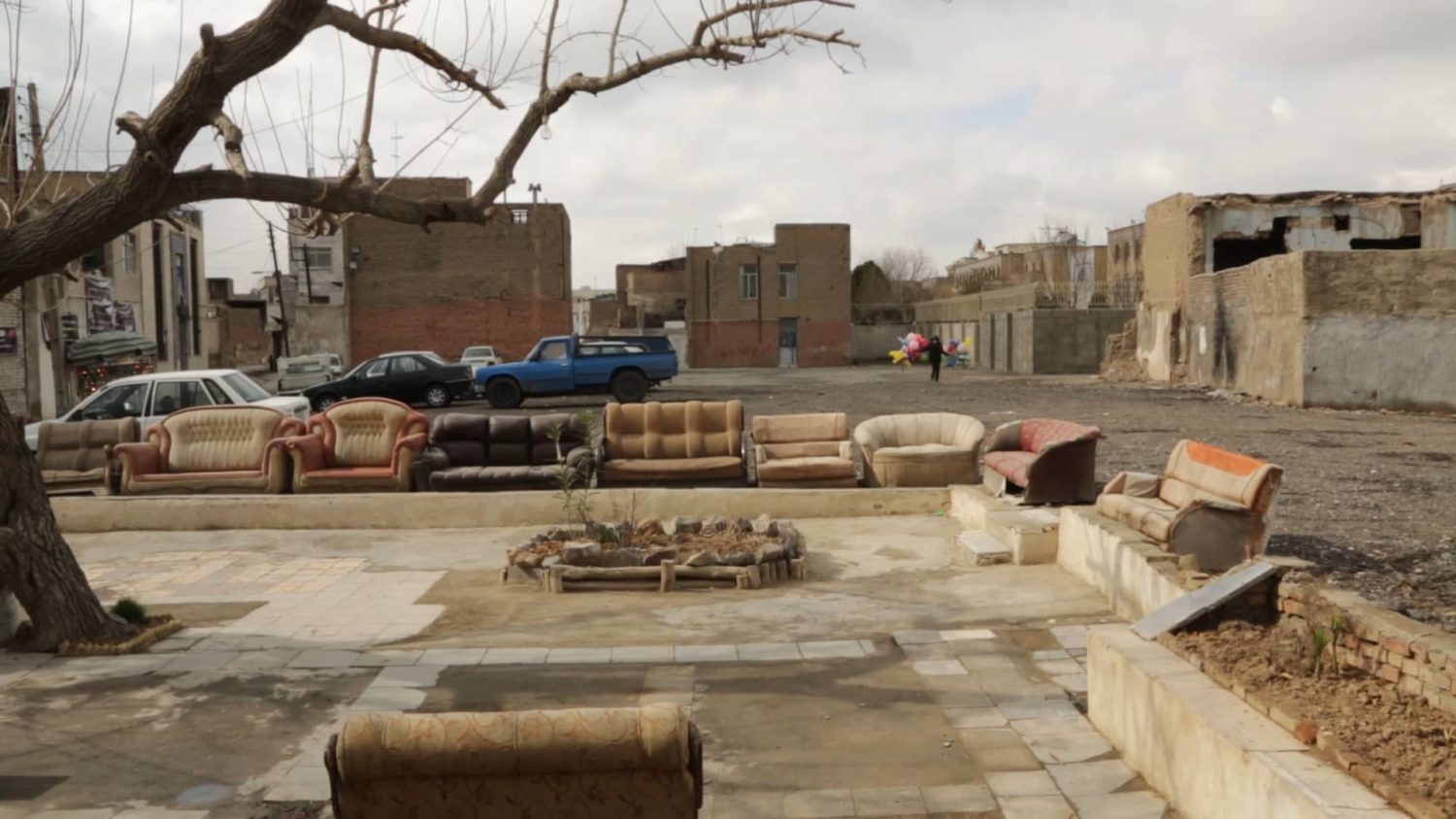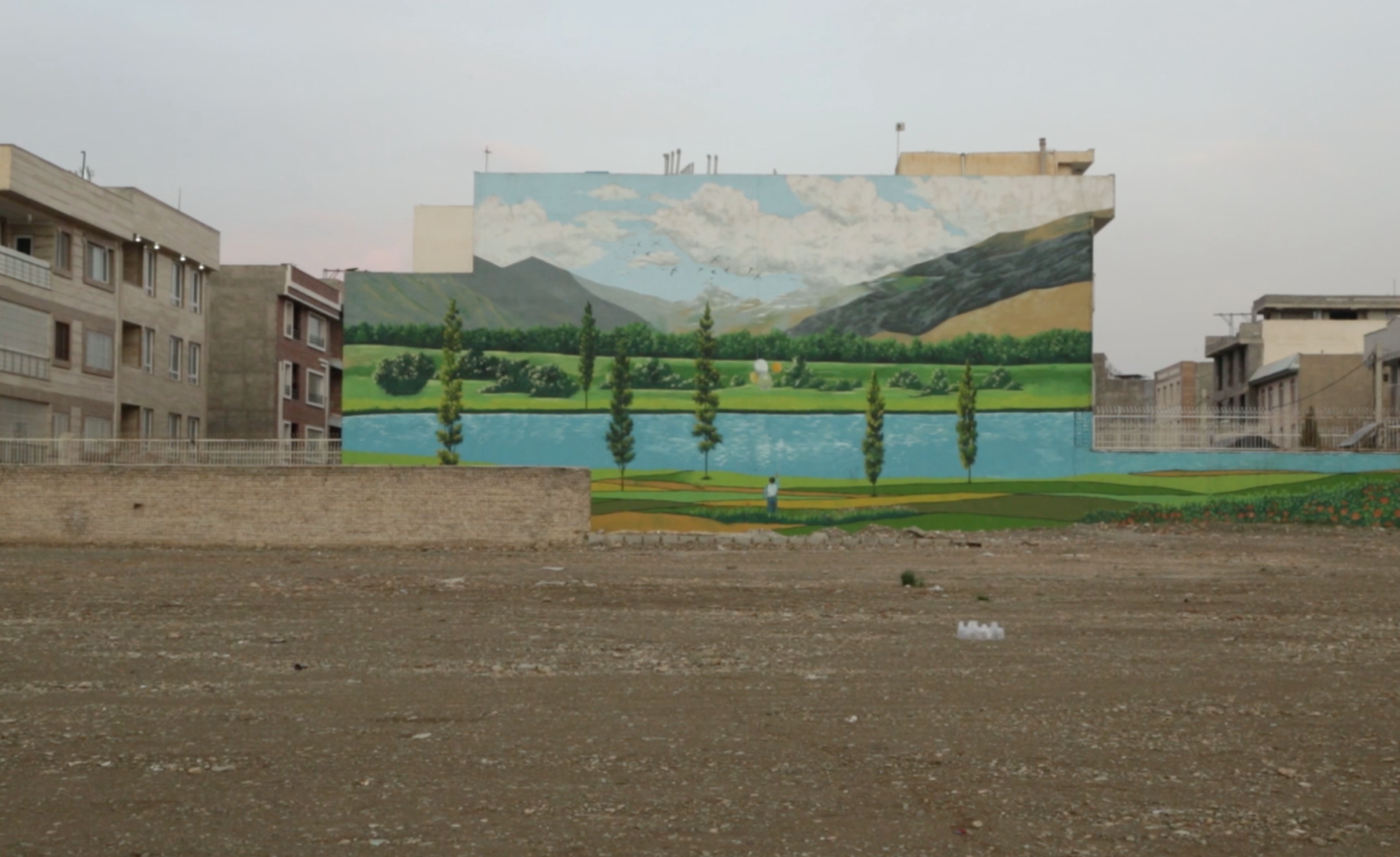Daniel Kötter’s Striking Film HASHTI TEHRAN Examines Life In Iran’s Urban Peripheries
By Something CuratedHashti, in most traditional houses in Iran, is the space behind the sar-dar or doorway; they are designed in many different shapes, including octagonal, hexagonal, square and rectangular. The hashti is a space of distribution and circulation. Hasht, which means eight, is an allusion to an octagon with several directions which makes it possible to direct a visitor towards the various parts of the house according to the goal and the reasons of the visit. Initially, the hashti was intended to regulate the access and circulation towards the courses: private (andarouni) and semi-public (birouni), reserved for the reception from abroad and the access to spaces of service respectively.
Taking its name from this directional space and screening this evening, 28 June, at London’s Birkbeck Institute for the Moving Image, HASHTI TEHRAN is a film and discursive project intiated by Daniel Kötter, in collaboration with Shadnaz Azizi, Kaveh Rashidzadeh, Pouya Sepehr, and Amir Tehrani. Based on the idea that Tehran itself represents a house, so to speak the inner circle of The Islamic Republic of Iran, the outskirts of the city become the space of transition between inside and outside, between urban and non-urban.
Thus the project looks at four very different areas in the outskirts of Tehran: the mountain of Tochal in the north, the area around the artificial lake Chitgar in the West, the construction of social housing called Pardis Town in the far east and the neighbourhood Nafar Abad at the southern edges of the city. By combining on-the-road footage and architectural documentary, and inverting the techniques of inside and outside shots the film HASHTI TEHRAN portrays Tehran through its peripheral spaces.

“Segregation” and “privatisation,” “security” and “control”, are core terms of urban transformation in the developing cities of the 21st century around the globe. Its contested counterparts are “public” or “open space,” “access” and “citizenship.” All these concepts seem stuck in the negotiation between aspirations of new liberal economies trying to connect to a global construction and business boom, and a tendency of preserving a shared public sphere for all groups of society within the urban area.
HASHTI TEHRAN tries to shift this focus to areas where the controlling force of urban development seems to lose its influence, where definitions get blurry and fluid: the edges and peripheries, those contact zones, where city and landscape, nature and construction meet. Tehran’s peripheral geography shows a significant structural analogy with its social, environmental and psychological divisions: the northern periphery, reserved for the upper class in penthouse apartments and for recreation in the clean air of the mountains, heavily contradicts the situation at the southern periphery, where smog and desert define the social life of the middle and lower classes.

HASHTI TEHRAN examines the different strategies of urban planners, architects and sociologists in these areas, while also questioning, what are the different strategies of the actual inhabitants to live around these mechanisms of control and definition, how can alternative spaces be created, and what role does the non-urban space play in the every day life of those people?
This evening’s screening of HASHTI TEHRAN at Birkbeck Institute for the Moving Image will be followed by a Q&A session with Daniel Kötter (Director) and Alireza Labeshka (Curator) in conversation with Pooya Ghoddousi (Geographer, UCL). Book tickets here.
Feature image: Still from HASHTI TEHRAN (via Daniel Kötter)